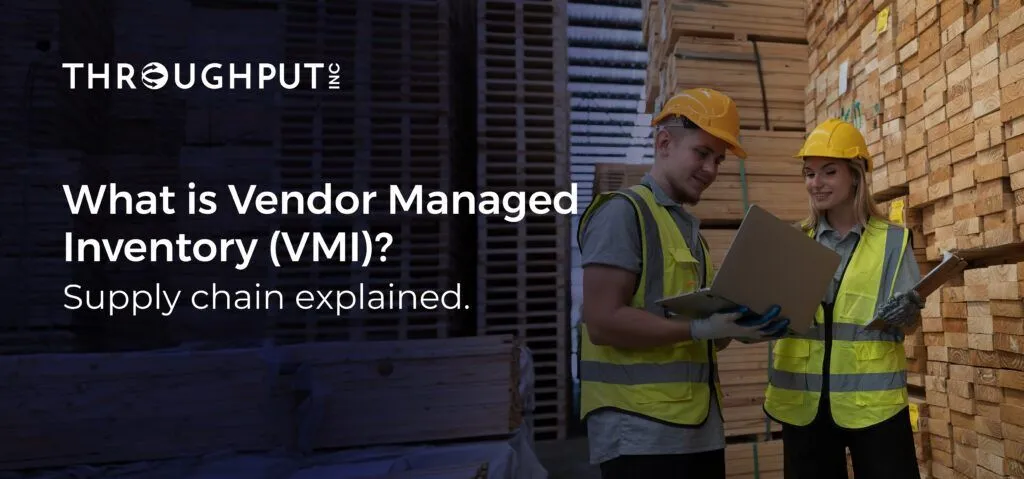Vendor Managed Inventory: Boost Efficiency & Reduce Stockouts in 2025

In today’s fast-paced supply chain environment, maintaining the right inventory levels can be a challenge. That’s where Vendor Managed Inventory (VMI) comes in—a powerful strategy designed to improve efficiency, reduce costs, and eliminate stockouts. By shifting inventory management responsibilities from the buyer to the vendor, businesses can achieve better visibility, optimized stock levels, and stronger supplier relationships.
In this blog post, we’ll explore what vendor managed inventory is, how it works, and why it’s a strategic advantage for companies in 2025.
What is Vendor Managed Inventory (VMI)?
Key Features of VMI:
- Vendor tracks inventory on behalf of the buyer
- Automatic replenishment based on pre-agreed thresholds
- Shared access to inventory usage and demand data
This collaborative approach reduces the buyer’s workload and ensures the vendor delivers just the right amount of stock at the right time.
How Vendor Managed Inventory Works
Here’s a step-by-step breakdown:
- Data Sharing: The buyer provides the vendor with access to sales, stock, and consumption data.
- Order Forecasting: Using predictive analytics or historical trends, the vendor determines when and how much to restock.
- Automated Replenishment: The vendor ships products to the buyer as needed, without the buyer initiating the purchase.
This automated, data-driven approach improves supply chain responsiveness and minimizes human error.
Benefits of Vendor Managed Inventory
Implementing a vendor managed inventory by Throughput Inc system brings a wide range of benefits for both suppliers and customers. Let’s explore some of the key advantages:
1. Reduced Stockouts and Overstocks
By allowing vendors to manage inventory based on real-time usage data, businesses avoid the common issues of overstocking or running out of products.
2. Improved Forecasting Accuracy
Vendors gain direct access to demand trends and consumption data, leading to more accurate forecasting and efficient inventory planning.
3. Cost Savings
VMI minimizes the costs associated with emergency shipments, excess storage, and lost sales. Better forecasting also reduces waste and obsolescence.
4. Strengthened Supplier Relationships
VMI fosters a collaborative partnership. With shared goals and responsibilities, suppliers and buyers work more closely to ensure mutual success.
5. Increased Operational Efficiency
Buyers save time and resources by offloading inventory management tasks.
Industries That Benefit Most from VMI
While VMI can benefit any supply chain, it’s particularly effective in industries with high volume, frequent replenishment, and tight inventory controls. These include:
- Retail: Supermarkets and large retailers use VMI to maintain fully stocked shelves without overburdening store managers.
- Healthcare: Hospitals rely on VMI to manage critical medical supplies efficiently.
- Manufacturing: Manufacturers use VMI for managing raw materials and component inventories on the production line.
- Automotive: Car manufacturers benefit from VMI to streamline parts supply across assembly plants.
The flexibility and adaptability of vendor managed inventory make it a valuable solution across multiple sectors.
Technology’s Role in Modern VMI Systems
In 2025, vendor managed inventory has evolved significantly with the help of technology.
Modern VMI Tools Include:
- Cloud-Based Dashboards: Allow both vendors and buyers to track inventory in real-time from any location.
- AI-Powered Forecasting: Improves order accuracy by identifying patterns and seasonal trends.
- IoT Devices and Sensors: Monitor stock levels automatically and reduce the need for manual inventory checks.
- API Integration: Connects VMI platforms directly with ERP systems for seamless data exchange.
These tools enhance transparency, speed up decision-making, and support continuous supply chain optimization.
Challenges in Vendor Managed Inventory Implementation
While the advantages are clear, setting up a VMI system can involve some initial challenges:
- Data Integration Issues: Integrating systems between vendors and buyers requires technical expertise and collaboration.
- Trust and Transparency: Buyers must trust vendors with sensitive data and decision-making authority.
- Change Management: Shifting from a traditional model to VMI demands training, cultural adaptation, and process restructuring.
Conclusion: Why Vendor Managed Inventory is the Future
Vendor managed inventory offers a proven solution that improves efficiency, reduces stock-related risks, and supports long-term supply chain resilience.
By embracing VMI and leveraging modern technology, businesses can gain a competitive edge in 2025 and beyond. It’s not just a trend—it’s a strategic transformation that every forward-thinking company should consider.


